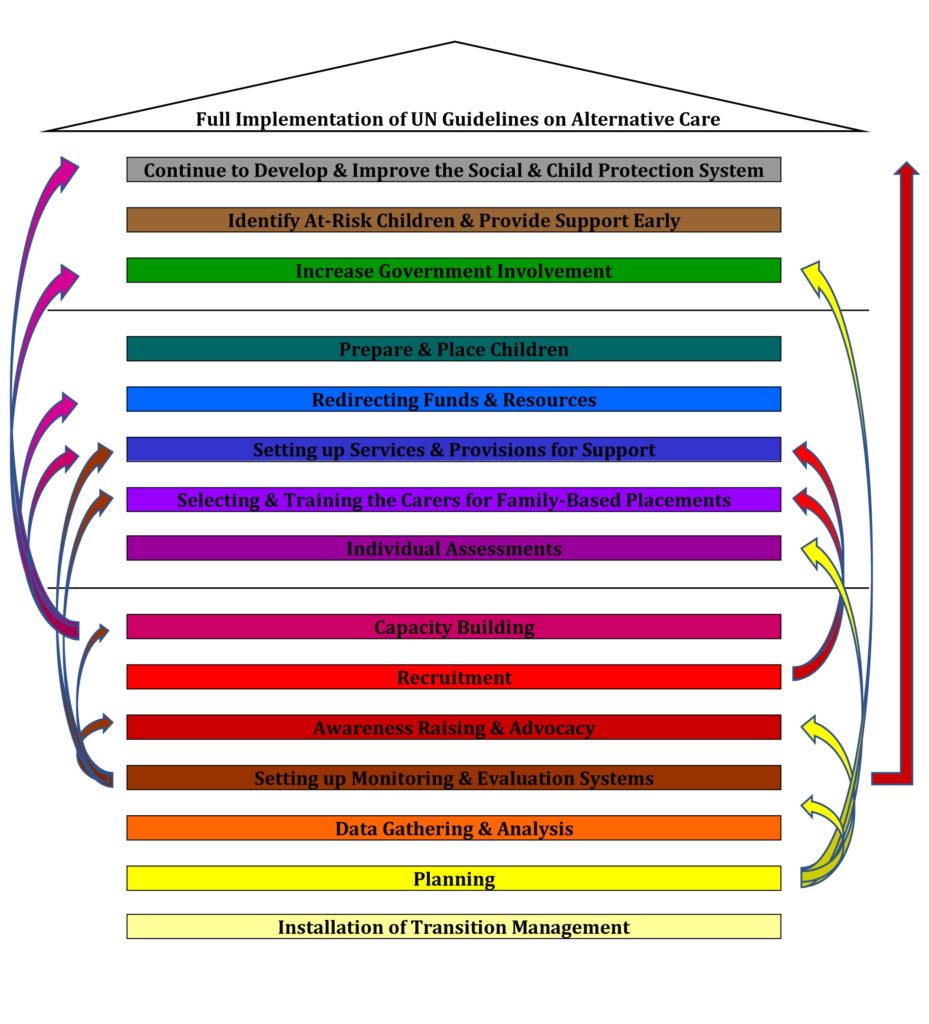Part 5 of the explanation of the ToC: In the previous blog we saw why it is so important to gather data and what kind of data needs to be gathered at the national and community level. This week, we see what else is involved in data gathering and Analysis, starting with the data that needs to be gathered at the level of individual institutions.
At the level of institutions, information (stock and flow information) is needed on :
- How many children in the institution?
- How many children were admitted per year for the past five years?
- Where did they come from? (it can be useful to use geo-mapping, for analysis to get a concrete idea of what areas children are from and where services will be needed)
- How many children left the institution per year for the past five years?
- Where did they go?
- How long have the children been in the institution?
- What is their background (ethnicity, religion, disability etc)?
- What are their ages?
- What are the main reasons for children ending up in the institution?
- Relevant information about their health status
- What resources -material as well as human – are present in the institution?
Having gathered this information, the next task is to analyse it. The analysis will provide an overview of, for example, the reasons why children end up in institutions – this is something to target with regards to prevention -, whether legislation allows children to be moved out of institutions at all – this refers to data gathered at the national level -, and whether there are provisions for family-based care. The answers to all these questions should shape the strategy that is set up for the transition, with knowledge of the challenges and the opportunities that are present.
Data gathering will also inform future stages of the process. Being aware of the resources present in the institution will allow for easier redistribution of those resources later on. Similarly being aware of the services that are already being offered in the community, and what organisations are already active within the community, gives an idea of what services need to be set up from scratch, which ones can be built on, and in which cases having to set up new services can be avoided by entering into partnerships with existing organisations, and having them take care of it. This is relevant regardless of whether or not deinstitutionalisation is part of your transition.
The stage of individual assessment, which will be discussed later, is in itself another stage of data gathering, just at a far more detailed level.
The information you gather will also give you ammunition for awareness-raising and advocacy. It is a sad but true fact that when there is no data available on an issue, to many policymakers and government bodies, the issue does not exist, so it does not need to be addressed. This makes it extremely important to make sure that data and evidence are gathered about children without parental care or those living in vulnerable families. Having this data will help make your case to all actors and stakeholders involved in the change you are setting in motion, as well as helping you determine the best strategies and directions.

If you would like to read the explanation with the model from the very start, you can go HERE.
Please share this blog to help spread awareness.

